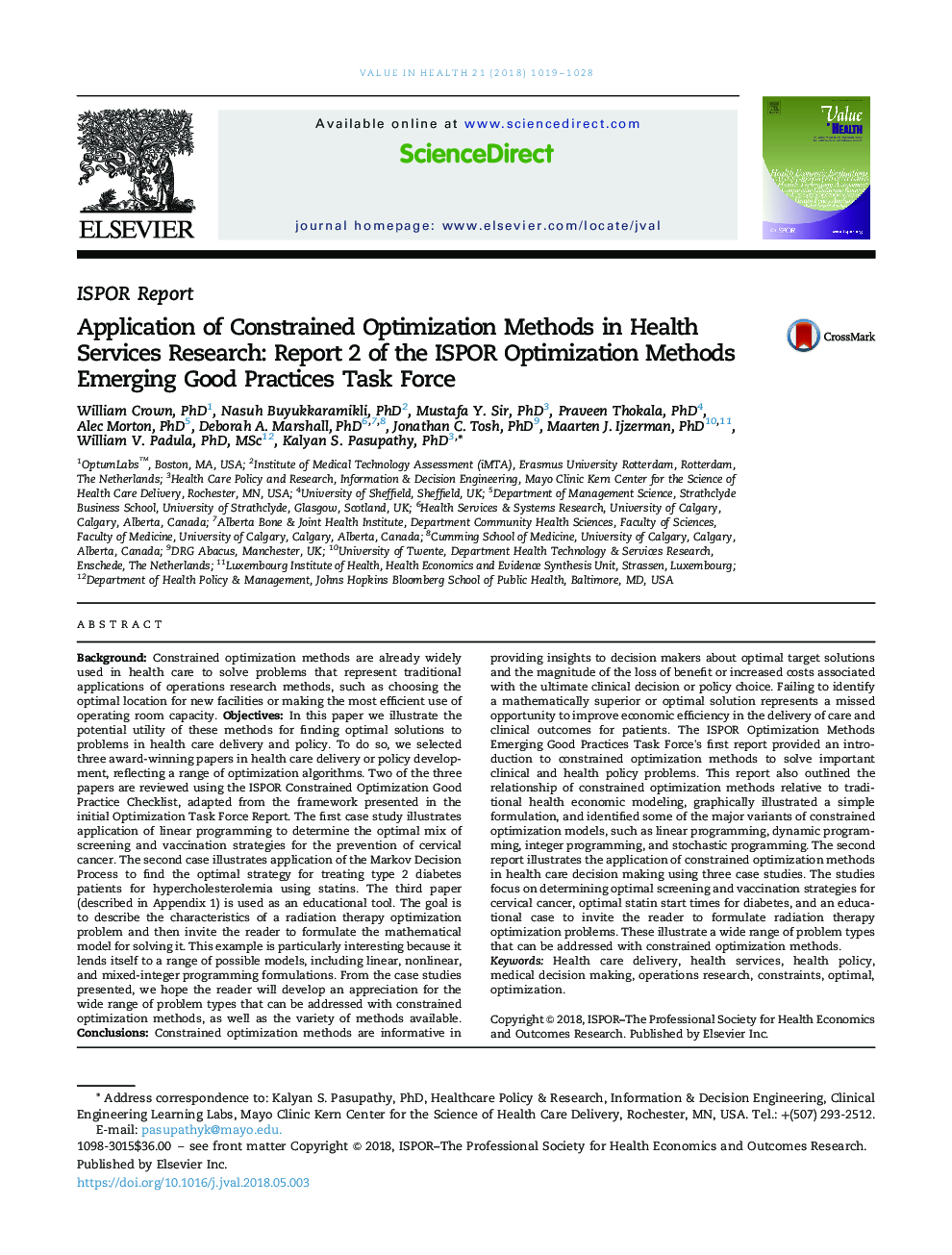| Article ID | Journal | Published Year | Pages | File Type |
|---|---|---|---|---|
| 10153855 | Value in Health | 2018 | 10 Pages |
Abstract
Constrained optimization methods are informative in providing insights to decision makers about optimal target solutions and the magnitude of the loss of benefit or increased costs associated with the ultimate clinical decision or policy choice. Failing to identify a mathematically superior or optimal solution represents a missed opportunity to improve economic efficiency in the delivery of care and clinical outcomes for patients. The ISPOR Optimization Methods Emerging Good Practices Task Force's first report provided an introduction to constrained optimization methods to solve important clinical and health policy problems. This report also outlined the relationship of constrained optimization methods relative to traditional health economic modeling, graphically illustrated a simple formulation, and identified some of the major variants of constrained optimization models, such as linear programming, dynamic programming, integer programming, and stochastic programming. The second report illustrates the application of constrained optimization methods in health care decision making using three case studies. The studies focus on determining optimal screening and vaccination strategies for cervical cancer, optimal statin start times for diabetes, and an educational case to invite the reader to formulate radiation therapy optimization problems. These illustrate a wide range of problem types that can be addressed with constrained optimization methods.
Keywords
Related Topics
Health Sciences
Medicine and Dentistry
Medicine and Dentistry (General)
Authors
William PhD, Nasuh PhD, Mustafa Y. PhD, Praveen PhD, Alec PhD, Deborah A. PhD, Jonathan C. PhD, Maarten J. PhD, William V. PhD, MSc, Kalyan S. PhD,
